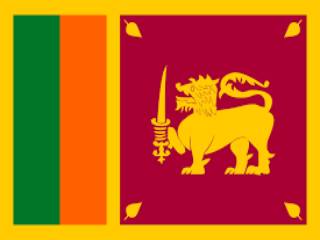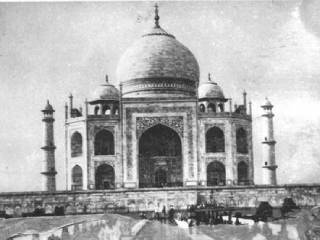
The Indian mind, living in its opulence of spirituality and self-belief in all things good, refuses to see the harshness of the truth inherent in the order of the nation states. Every Indian is a yoga guru. Every yoga guru, including the Prime Minister Narendra Modi, believes that he can engineer the rise of India as a great power without suffering a wound. But the international society of nation-states is a hostile place. This hostility was on display again on 18 September, when eighteen Indian soldiers were killed and dozens wounded in an attack on the Indian Army camp at Uri, planned, sponsored and executed by Pakistan. This is a known enemy. Every Indian is an anti-Chanakya.
The known enemy attacks us in known ways and in known places. We are taught that Mahmud Ghazni launched 17 attacks on Indian cities during 1000–1027 CE, through known means, through known routes, seizing the Somnath temple in Gujarat in the final invasion. But we are not taught that each time we waited for him to do so, we did not go beyond our borders to prevent him, to tame him, to fight him, to eliminate him. In history, you wouldn’t find instances when a known enemy torments an entire people so many times and they don’t respond. Much like Mahmud Ghazni, Pakistan, the known enemy, torments us in Jammu & Kashmir. Each time, we have prior intelligence input. Each time, we wait. Each time, we do not engineer a response.
The 18 September attack at Uri is perhaps the worst Pakistani attack since the Kaluchak attack of 14 May, 2002 when three soldiers, 18 relatives of Indian soldiers and ten civilians were killed. On 2 January this year, the enemy stormed the Indian Air Force base at Pathankot, killing seven soldiers. It succeeded because Indian policemen in Punjab were hand-in-glove with the enemies to earn money via illicit drugs routes. Similar attacks have taken place in Jammu & Kashmir regularly. Even after the enemy invaded Kargil in 1999, the largest jihadist war in modern times executed by Pakistan, we chose to serve biryani to General Pervez Musharraf, our tormentor in chief. Both India and Pakistan have nuclear bombs. It is only the Indian mind that feels threatened.
Pakistan the enemy camouflages successfully for modern times. It calls its state-backed terrorists “non-state actors”, the world believes in this phrase. It calls its terrorists “good Taliban”, it takes years to explain it to Europeans and Americans that “good” in this context means evil. It sends a writer to visit Sufi shrines of Delhi and write a book. Indians develop trust in the author of the book, Delhi by Heart, a title given by the Inter-Services Intelligence (ISI), the creator of Jaish-e-Muhammad, Lashkar-e-Taiba and the Taliban. The book’s purpose is to insert the author in Track II diplomacy. The enemy sends a saree to the mother of its enemy leader. The cost of the saree is: seven soldiers killed in Pathankot and the bruised confidence of 1.25 billion Indians. In warfare, camouflaging your way into the enemy’s defences is a successful strategy. Pakistan does it well.
Lieutenant-General A A K Niazi, the commander of Pakistani troops who surrendered at the fall of Dhaka in 1971, had served during the World War II on the Burma front. In 1964, Niazi, then a brigadier, argued that a weak state like Pakistan must rely on a strategy of infiltration which “implies bypassing of enemy posts by relatively small parties which penetrate deep and unseen into the defences and converge at a pre-designated objective” or “lie down in the enemy area and remain there for extended periods if needed.” “The adoption of these [infiltration] tactics by the lesser developed nations like ours is a compelling necessity,” he added. Niazi’s strategy and the jihadist mindset of the Pakistani army is detailed by C Christine Fair in her book, Fighting to the End: The Pakistan Army’s Way of War.
Pakistan has always used this strategy of infiltration and guerrilla warfare either during the Operation Gibraltar that led to the 1965 war, in Kargil in 1999, on 26/11 in Mumbai and later through the attacks by the Indian Mujahideen in parts of India, and consistently, persistently and aggressively through past nearly three decades in Jammu & Kashmir. The behaviour of the enemy is familiar; its strategy is known to us. Even if India were to hand over Kashmir to Pakistan, the nature of the enemy is such that it will begin targeting other regions of India. Despite knowing this enemy, India’s strategy to counter it is not ready, not known, not effective, not consequential. But the enemy, like Mahmud Ghazni, will strike again and again. This tactic has Islamic lineage.
In his book, Pakistan Mein Tehzeeb Ka Irtiqa, Sibte Hassan (1912-1986), an Indian-Pakistani Marxist who graduated from the Aligarh Muslim University, narrates how Muhammad bin Qasim was not the first Islamic invader of India. The Islamic attacks against Sindh and Balochistan had begun as early as during the era of Umar ibn Khattab, the second caliph of Islam who ruled from 634 to 644 CE. The first attack, which Sibte Hassan says was without consent from Umar but authorised by a local governor in Bahrain, was led by Mugheera ibn Abi Al-Aas and targeted against a port at Debal, near Karachi. Usman ibn Affan, the third Islamic caliph who ruled from 644 to 656 CE, considered an attack on Sindh by land. At that time Makran, a part of Balochistan, was already ruled by a Muslim governor.
When Muawiyah ibn Abi Sufyan (reigned 661–680 CE) – the first ruler of the Umayyad dynasty – became the caliph, he sent several military expeditions: led by Abdullah bin Sawwar Abdi, by Rashid bin Umru, by Sanan bin Salmah (all names as per phonetics). All of these military raids ended in defeat. Sibte Hassan writes that when Hajjaj bin Yousef became the Governor of Iraq in 694 CE, he finally made up his mind to conquer Sindh and selected his son-in-law Muhammad bin Qasim to lead the invasion. Qasim registered many victories during 712-715 CE. The Muslim conquerors before Muhammad bin Qasim and after him have not stopped in their glories because Islam requires Muslims to conquer all the lands. The Quranic verse 8:39 commands: “And fight them until there is no fitnah and (until) the religion, all of it, is for Allah…” The word fitnah is translated as mischief but in Islamic literature, it means everything that is not Islamic. Similarly, the word “fight” in this verse is actually: Qatelu-hum, whose accurate meaning is “kill them.”
The Kashmir conflict today is rooted in Pakistan’s religious identity. The Kalima, or the words proclaiming one’s faith in Islam, reads: La Ilaha Illalah Muhammad-ur-Rasoolullah. Its actual translation is: there is no deity but Allah and Muhammad is his Messenger. But in Pakistan, Islamic clerics have translated it differently as reflected in the wildly popular slogan among Pakistani people: “Pakistan ka Matlab kya (What is the meaning of Pakistan), the chorus: La Ilaha Illalah Muhammad-ur-Rasoolullah.”Nowhere in the Islamic world, Kalima is translated this way. Unless Pakistan’s identity undergoes some radical transformation, it is unlikely that it will not view itself as the vanguard state of the Muslim Ummah. In Pakistan, the common understanding is that Pakistan has two types of borders: geographical and ideological. The ISI, which creates, nurtures and shields terrorist groups, considers itself as the ideological guardian of Pakistan, the second state to be established in the name of Islam, the first being Medina.
People of India must reconcile to the idea that the jihadist attacks in Kashmir will continue as long as Pakistan retains its identity in its current form. However, the Indian state needs to evolve a 100-year strategy against this known enemy. The strategy must be for India to behave like neighbours behave in our villages. When your neighbour hurts you, you shun eye contact and refuse to attend their wedding. When a neighbour encroaches onto your land, you push back. When your neighbour occupies your land, you break their nose. There is a slight distinction in the case of Pakistan. This enemy is not trained to sit idle, not even in its glories, not even in Ramzan. While India’s strategy must be to empower Balochs, Sindhis, Kashmiris and Pashtuns, a successful strategy must be to break up Pakistan by striking at the heart of the enemy: the Punjabi elite, right in Punjab, across the shared international border.
Source : Firstpost

 Mizoram: EC accepts Christians’ demand to defer counting on Sunday, but what if Hindus had made a similar demand?
Mizoram: EC accepts Christians’ demand to defer counting on Sunday, but what if Hindus had made a similar demand? Sign Petition : Immediately repeal the draconian and unconstitutional ‘The Waqf Act, 1995’
Sign Petition : Immediately repeal the draconian and unconstitutional ‘The Waqf Act, 1995’ Shriram : Sri Lanka’s saviour
Shriram : Sri Lanka’s saviour Why it is so cool to malign Hindu gods and goddesses, but it may not be that easy now
Why it is so cool to malign Hindu gods and goddesses, but it may not be that easy now Shocking Truth of Taj Mahal exposed by Late Pujya P. N. Oak
Shocking Truth of Taj Mahal exposed by Late Pujya P. N. Oak How are Hindus treated in states where they are in a minority?
How are Hindus treated in states where they are in a minority?